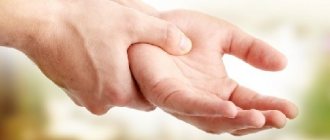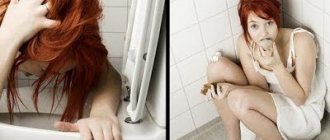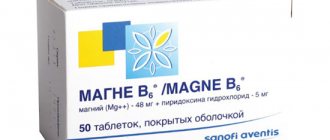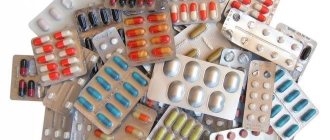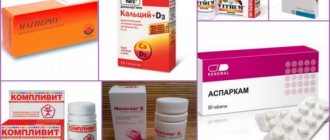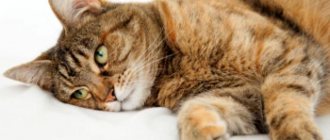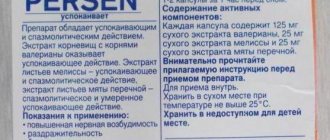MEDICATIONS
The need to take medications during an exacerbation period is understood by the vast majority of people who have a mentally ill person in their family.
But it is also important to know what this or that drug is used for. Some relatives try to prescribe and change treatment on their own, following their ideas about therapy or the patient’s requests, although doing this is categorically unacceptable! It happens that if a drug, for example, haloperidol, is temporarily unavailable, they “replace” it with cyclodol (“the doctor prescribed both to us” ) or trying to treat a psychotic exacerbation with phenazepam. To avoid these types of mistakes and consciously monitor the medication intake of a sick family member, you need to know some general principles. All drugs used in psychiatry are conventionally divided into groups. Here are the four most common of them: antipsychotics (neuroleptics), antidepressants, tranquilizers.
How do psychiatric medications work?
That is, psychiatric drugs, in fact, do not TREAT anything. They simply skillfully mask SYMPTOMS for a while , nothing more.
And, if it were harmless and without consequences, then fine... But, in the case of drug addiction treatment (and not only, in fairness), psychiatric drugs do more harm than good.
So how do psychiatric medications work? Any medicine of the psychiatric group, no matter what generation or form of influence, works on the principle of forcibly “moving the channel” of the flow of hormones and the interaction of brain neurons.
That is, if a person has problems with the thyroid gland, let’s say, due to weak production of serotonin and a huge release of the stress hormone, he is depressed, and he is given some kind of tranquillizer, antidepressant, reuptake inhibitor, etc., then the effect will be as follows:
There will be no symptoms, since the substance forced the body to artificially release (or retain) some hormone (in all seriousness, the mechanism of action is the same as that of drugs).
But, as soon as you stop taking the medicine, the disease immediately returns, and the person often becomes worse than before the “treatment” began.
Why is that? But because the human body is an incredibly perfect system. And, if it is forced to work, contrary to its original data , then it will be destroyed.
And those hormones that were in relative order before, after such interventions also begin to work incorrectly (they stop being produced almost completely, for example)
NEUROLEPTICS
They represent the most important group of drugs used for schizophrenia, named for some reason because of their side effects - the ability to cause the so-called neuroleptic syndrome in patients sensitive to them. It consists of muscle stiffness, restlessness, a feeling of “twisting” in the muscles of the limbs, “rolling up” of the eyeballs, and increased salivation.
However, the main purpose of this group of drugs is to relieve psychotic symptoms. Therefore, it would be more correct to call them ANTIPSYCHOTICS . This name is now increasingly found in literature.
This group includes such seemingly different drugs as: aminazine, haloperidol, tizercin, triftazine, clopixol, moditen-depot, neuleptil, sonapax, and some others. These are the so-called typical antipsychotics, used by psychiatrists for decades.
The second subgroup of antipsychotics are drugs of a new generation, whose side (neuroleptic) effect is expressed to a much lesser extent and, if manifested, then, as a rule, only in high doses. These include: azaleptin (leponex, clozapine), rispolept (risperidone, speridan), Zyprexa (olanzapine), Solian, sertindole, Seroquel, Zeldox, Abilify (synonyms or analogue drugs are indicated in parentheses). The name of this subgroup is atypical antipsychotics. The effectiveness of this group has also been proven in relation to negative symptoms in schizophrenia - with long-term use, emotional flatness, indifference, apathy decrease, and patient activity increases. In addition, taking drugs in this group can be reduced to one or two times a day, which certainly makes them more convenient.
Quite often, patients for one reason or another refuse to take medications: some do not like their taste, others are dissatisfied with their effects, main or side. Many patients and their relatives are burdened by the need for three daily appointments, which “ties” them to certain conditions and makes long trips and being “in public” difficult. Some, due to illness, do not realize the need for strict adherence to the dosage regimen, and their relatives cannot exercise full control. For such cases, drugs with prolonged (extended) action have been created. They can be taken (usually by injection) with much less frequency - on average once every 2 to 4 weeks. “Traditional” representatives of this group: haloperidol-decanoate, moditene-depot, clopixol-depot; “atypical” so far there is only one – rispolept-consta.
Treatment of psychogenic ED by a psychotherapist
⚡️ Order Levitra for erection ➡
How to deal with erectile dysfunction if it is a consequence of psychological disorders? In this case, the man should contact a sex therapist/psychotherapist/psychoanalyst.
The physician must conduct an oral interview and find out what factor provoked the sexual disorder. It is advisable for a man to attend sessions with his chosen one. The role of the mistress/wife in this matter is very significant.
The following techniques are currently used:
- The “imaginary ban” method. A man is prohibited from having a sexual life. Sexual activity is limited to kissing, petting, and hugging. This technique allows a man to regain his former confidence. As practice shows, the method of imaginary prohibition allows in 70% of cases to restore potency in a couple of weeks.
- Paradoxical intention. A man should convince himself that he really cannot have sex. The method of paradoxical intention is based on the well-known principle “The force of action is equal to the force of reaction.” Psychotherapists believe that the technique will be effective in cases where a man has been suffering from ATS (anxious expectation of sexual failure syndrome) for a long time.
- Sincere confession. Sometimes a man should simply admit to his chosen one that he is experiencing problems with potency. Psychological support of a mistress/wife sometimes allows you to restore your hard-on without the use of drugs.
Latest information: How to restore morning potency?
If psychological training and techniques are ineffective, you can turn to hypnosis. This technique is quite controversial. Some doctors note that hypnosis is effective, and a number of urologists equate hypnosis with quackery.
Reviews about the procedure are also mixed. A number of men leave positive reviews on thematic forums, and some patients claim that hypnosis is completely ineffective.
If a man has firmly decided to resort to hypnosis, it is advisable to contact a professional hypnotherapist.
CORRECTORS
After getting acquainted with the neuroleptic syndrome, the thought may arise: “why then use antipsychotics, especially typical ones, if their side effects are so unpleasant that they exceed the benefits of the main treatment?” Unfortunately, sometimes atypical antipsychotics are not effective enough to be used exclusively. In some cases, traditional antipsychotics have to be added to them or only them have to be prescribed. Sometimes only in this case it becomes possible to remove the patient from an exacerbation. To prevent neuroleptic syndrome in this case, psychiatrists often resort to a group of CORRECTORS . They reduce or completely eliminate these side effects. These include cyclodol, akineton, parkopan, PC-Merz. As follows from the above, taking drugs of this group for schizophrenia is justified only if there is a risk of neuroleptic complications. In the case of their uncontrolled use in large doses, complications of another kind are possible, reminiscent of psychotic disorders in their picture.
The principle of action of nootropics on the psyche
These drugs for the treatment of mental illness are prescribed for anxiety and depressive disorders, hypochondria, obsessive phobias and sleep problems.
What is the tranquilizing effect? This is an action in which the patient becomes calm, confident in himself and his actions. He is no longer bothered by obsessive thoughts and fears.
The disadvantage of tranquilizers is that many of them make a person sleepy and inactive. The patient gains excess weight and loses interest in life. There are new generation tranquilizers that have a minimum of side effects and contraindications - they help get rid of fears and anxieties, but do not turn the patient into a “vegetable”.
Tablets for mental disorders with a tranquilizing effect are divided into several categories. This:
- benzodiazepines;
- triazolobenzodiazepines;
- heterocyclic derivatives;
- diphenylmethane derivatives;
- heterocyclic.
Nootropics are the most harmless class of psychotropic drugs. Many of them can be purchased at a pharmacy even without a prescription from a psychiatrist.
Nootropics have a positive effect on cognitive functions. Capable of stimulating learning and memory processes, increasing the brain’s resistance to various adverse factors (in particular, hypoxia) and extreme stress.
However, they do not have a direct stimulating effect on mental activity. In rare cases, during nootropic therapy, the patient develops causeless anxiety and sleep disorders.
Tablets with nootropic effects, which are prescribed to adults, children and adolescents to stimulate cerebral circulation and improve cognitive function:
- pyrrolidone derivatives (“Piracetam”, “Phesam”);
- cyclic derivatives, GABA (“Pantogam”, “Phenibut”, Aminalon”);
- acetylcholine precursors (“Deanol”);
- pyridoxine derivatives (“Pyritinol”, “Riridoxine”);
- drugs with neuropeptide action (“Vasopressin”, “Thyroliberin”, “Cholecystokinin”);
- antioxidants (“Mexidol”).
Almost any of these drugs can be purchased at any pharmacy without a prescription, since they are not included in the list of potent drugs.
Many of the above drugs are used in the treatment of children with mental retardation, with moderately severe delay in psycho-speech development. Psychiatrists often prescribe nootropics for suspected early childhood autism and manifestations of schizophrenia in children and adolescents. If therapy with nootropics alone does not produce an effect, drugs with neuroleptic or tranquilizing effects are added to the treatment.
Many nootropics have proven to be effective in preventing the progression of senile dementia.
Nootropics can effectively counter the development of toxic encephalopathy in drug addicts and people with alcohol addiction.
You should be extremely careful when taking it without authorization: nootropics have quite a few contraindications and in some cases can provoke acute psychotic states (if the patient is predisposed to this). In this case, emergency assistance for mental disorders will be required to relieve psychosis.
ANTIDEPRESSANTS
Used to treat conditions characterized by prolonged periods of low mood.
This group includes: amitriptyline, melipramine, anafranil, ludiomil, pyrazidol, zoloft, paxil, remeron, coaxil, cipramil, cipralex, ixel, cymbalta, efevelon, oprah, fevarin. New generation drugs that act selectively on brain structures are highlighted in bold. responsible for depression and resulting in fewer side effects (dry mouth, urinary retention, etc.). Antidepressants are intended for long-term use - several months or even years. Only in this case can you count on a good result. In addition, it is important to remember: their effect begins to appear no earlier than after 2 weeks.
Mental health
This category of addiction includes the non-medical use of benzodiazepine tranquilizers and barbiturates, previously used as sleeping pills, now mainly as anticonvulsants. Drugs from the group of benzodiazepines: nitrazepam, diazepam (seduxen, relanium), nozepam, alprazolam, phenazepam, etc. The composition of reladorm, previously widely used as a sleeping pill, in addition to relanium, includes cyclobarbital.
Barbiturates: barbamyl (amytal sodium), etaminal sodium (Nembutal), sodium hydroxybutyrate, phenobarbital (luminal). The latter is used as an anticonvulsant in its pure form or as part of pagluferal tablets, similar to the Sereysky mixture, and is also part of Corvalol. Barbiturates such as secobarbital (Seconal) and sodium etaminal (Nembutal) are currently discontinued, included in list B of psychotropic and narcotic drugs, and are found on the “black” drug market. A similar picture of the development of drug addiction was also caused by the sleeping pill, a piperidine derivative, Noxiron, which is currently prohibited for official use.
Mechanism of action
In general, barbiturates and tranquilizers have an inhibitory effect on the central nervous system, which is clinically manifested by hypnotic, sedative, anxiolytic and anticonvulsant effects. Benzodiazepines affect the central nervous system through the limbic system of the brain. They increase the activity of the inhibitory neurotransmitter - gamma-amino-butyric acid (GABA). Benzodiazepine receptors are located near GABA receptors and, when activated, can enhance their function. Barbiturates also interact with GABA receptors, resulting in cell hyperpolarization and a decrease in the seizure threshold.
The effect caused by a single use of tranquilizers and barbiturates depends on the individual reaction of the consumer, including his expectations and psychological attitude. In small doses, these drugs can cause a euphoric effect, in large doses they can cause a hypnotic effect. Intoxication resembles alcoholic intoxication. Tranquilizers and barbiturates are used either alone or in combination with alcohol and other drugs: they potentiate weak opiates, relieve excessive excitement and relieve insomnia due to the abuse of psychostimulants.
Clinical picture of intoxication
With intravenous administration of barbiturates, during the first seconds or minutes, the effect of raushnarcosis is observed, a “switching off” occurs, which is perceived positively and which patients want to repeat. Taking tablet forms has a milder, gradual effect. Barbiturate intoxication resembles alcohol intoxication. Barbiturates are usually considered “hard, intoxicating” drugs, so they are resorted to if benzodiazepines are not available. The latter are often used in combination with alcohol to mutually potentiate the effect. In a state of intoxication, the emotional background is extremely unstable. Causeless fun, disorderly activity, unceremoniousness, and swagger are easily replaced by anger and aggression. Earlier and more strongly than during alcohol intoxication, motor coordination is impaired (shaky gait, unsteady posture, disproportionality of movements). Bradycardia, decreased blood pressure and body temperature, dilated pupils, hypersalivation, and sweating are typical. The duration of this phase of intoxication is 2-3 hours, then deep sleep sets in, during which it is extremely difficult to wake the patient. After sleep, a difficult awakening with symptoms of lethargy, weakness, and inability to concentrate. In case of an overdose, stupor and coma easily develop, which are life-threatening due to the possibility of paralysis of the respiratory center.
Dynamics of addiction formation
The development of addiction can be due to medical and non-medical reasons. In the first case, sleeping pills and sedatives are taken as prescribed by a doctor, and sometimes independently to relieve anxiety, fear, and insomnia. Abuse is common, but not everyone develops addictive disorders. Some people suffering from insomnia, which is most often one of the manifestations of neurotic disorders, cannot fall asleep without sleeping pills and take them for years. They also develop an addiction, but not a drug addiction, but an obsessive one (fear of not falling asleep without sleeping pills). Often, over time, they are forced to increase the dose of sleeping pills by 2-3 times. In these cases, a euphoric effect may be detected, which poses a threat to the development of drug addiction. This group of patients is characterized by the slow development of addictive disorders. Another group consists of patients who took sleeping pills and sedatives to achieve a euphoric and intoxicating effect. For this purpose, drugs are administered intravenously or in combination with alcohol.
Mental dependence, which is the onset of the disease, can have different periods of formation. For those who used sleeping pills to combat insomnia, it may develop in a few years; for those who used sleeping pills and sedatives to achieve euphoria, a few weeks are enough. A manifestation of mental dependence is the daily use of drugs in order to “calm down” or have fun. Tolerance increases: the dose is increased by 3-5 times. Taking sleeping pills is often alternated with alcohol (one can replace the other), and then, as tolerance increases, sleeping pills are preferred. Tranquilizers are used more often in combination with alcohol. The duration of the initial stage is from several weeks to several months. The advanced stage of the disease is characterized by the addition of physical dependence. Only when intoxicated does the patient experience satisfaction and physical comfort. The picture of intoxication changes: the first sedative phase does not occur, stuck affect prevails, and a desire to inflict serious bodily harm or destructive actions arises, which poses a danger to others. At this stage, coordination of movements during intoxication is practically not impaired. The attraction to the drug is compulsive, quantitative control is lost, which is why overdoses can occur and, instead of long sleep, at the end of intoxication a comatose state occurs, which is life-threatening.
Withdrawal syndrome develops within six months of systematic use of sleeping pills, it manifests itself within 24 hours after the last dose of the drug, and lasts up to several weeks. Withdrawal is difficult: chills alternate with heavy sweat, insomnia is combined with anxiety, restlessness, tension, and anger. Convulsive muscle contraction, fine tremor, increased blood pressure, and tachycardia are observed. The peak of development of withdrawal syndrome, according to Yu.N. Pyatnitskaya (1994), is the 3-5th day, when intense dysphoria turns into depression, motor activity decreases, 75% of patients experience convulsive seizures and 60% have withdrawal psychoses. type of delirium. Epileptic seizures often occur, and by the end of the week delirium occurs. The danger to life is associated with the possibility of developing status epilepticus.
Dependency states associated with the abuse of sleeping pills and sedatives are highly progressive and lead to severe mental disorders, including encephalopathy with psychoorganic syndrome.
Consequences of abuse of sleeping pills and sedatives
Long-term use of these drugs causes personality changes of the epileptoid type: the phenomenon of bradypsychism with viscosity of thinking, stagnation of affects, explosiveness.
The most severe outcome is the formation of a psychoorganic syndrome, characterized by severe memory impairment, weakening of understanding, intellectual decline combined with euphoria and lack of criticism, i.e. We are talking about severe dementia of the organic type. As a rule, social adaptation is also grossly disrupted; patients lose their jobs, often their family, and may commit crimes. Next »
TRANQUILIZERS
Used for anxiety conditions. When treating schizophrenia, they are used in short courses, often as auxiliary (additional to the main treatment) drugs.
Representatives of the group: relanium (relium), seduxen, sibazon, diazepam, phenazepam, nozepam, elenium, tazepam, rudotel, atarax, stresam.
At the end of the section on medications, it is necessary to emphasize: there are no definitely “bad” or definitely “good” drugs. All medications used by psychiatrists have proven effective in certain cases. The prescription of each drug can only be individual and carried out only by a doctor! Patients and their relatives, in turn, can learn to control their intake and correctly understand the purpose of treatment, especially during the period of remission.
Share on: WhatsApp
(Visited 13,877 times, 3 visits today)
Similar
In what cases are such drugs acceptable in the treatment of drug addiction?
Therefore, in the case of drug addiction, psychiatric drugs are justified only in one case: if a person has psychosis , he jumps on the windowsill and grabs an ax...
NoNarco contacts:
8(800) 551 07 01
The call is free!
Write to the doctor
We have branches in all major cities of Russia
We have the opportunity to forcefully pick you up at the RC from any city
But, again. In order to inject such a drug addict with Haloperidol, he must first be caught . And, if you have already managed to catch him, then it is much better to simply tie him up, and if he screams, then put a gag in his mouth, and not use a neuroleptic.
This is much more humane and, most importantly, more effective . The sensations from the effects of a strong neuroleptic are terrible! The person begins to move strangely, cannot find a place for himself, saliva flows from his mouth...
Maybe you have ever seen videos of drug addicts at the moment of withdrawal, performing incredible movements, twisting them all inside out? So, these are not “withdrawals”. They were “treated” with a neuroleptic .
During withdrawal symptoms, a person will not jump out of his “pants” like that, but you can’t fight against the drug and it’s impossible to restrain yourself so as not to make a strange movement.
There is no point in suppressing psychosis provoked by drugs with an antipsychotic, since in this case the problem is driven even deeper .
Well, the seizure was temporarily stopped, so what? As soon as the effect of haloperidol wears off, the “fun” begins again...
In this case, it is more correct to forcibly detoxify , give a loading dose of vitamins, medications for the heart and liver.
This way the person will come to his senses much faster.
And, if we’re talking about depression AFTER drug withdrawal, that’s it! There can be no talk of any tranquilizers !
We need to treat the cause, not hide the effect . And there is only one reason: a worn-out, tired body that needs to be supplied with vitamins, given good and long sleep, and, if possible, treated for a disrupted hormonal system.
This is all needed for one purpose: to restore metabolism . If you don't do this, then depression will not go away.
Or rather, not even like that. If a drug addict is not given anything (neither vitamins nor drugs that support organs), then his depression will go away anyway, but it will take much more time.
And, unfortunately, many cannot stand the moment when their body starts working properly and again grabs drugs , since the mental anguish during withdrawal is incredibly strong.
You can read more about this here: “Depression after amphetamine”
But if a drug addict is stuffed with antidepressants, tranquilizers, sleeping pills and the like, then his hormonal levels will NEVER be restored!
As soon as he stopped taking psychiatric medications, depression hit him with renewed vigor...
Therefore, we believe that the use of such drugs is unjustified. This is just an “ostrich” approach, nothing more.
Drug addiction must be treated. And since this is a disease that is much more complex than many physical ones, the approach to its treatment is by no means simply medicinal.
More about this here: “Drug addiction: what is the essence of the disease, how does it start and how to treat it”

